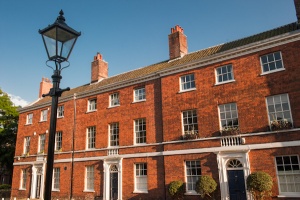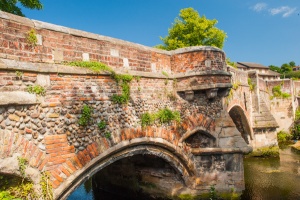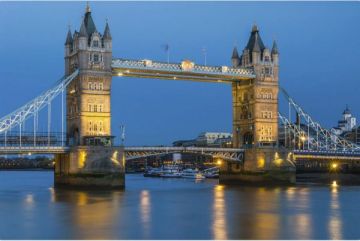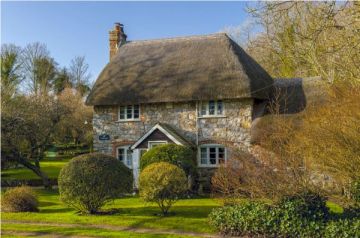
Norwich has such a rich history, and a wonderful legacy of historic buildings to visit, that it is hard to know where to begin. Most visitors will come to see the superb 12th-century cathedral, but did you know you can visit the site of the 12th-century canal that brought building materials to the cathedral site?
And did you know there are not one, but two cathedrals in Norwich?
And did you know that Norwich boasts not one, but two medieval halls, the finest guildhall outside London, and that sections of the medieval city walls still stand?
It seems that the entire city is full of 'did you know's'!
All the major historic attractions are detailed elsewhere in this guide to historic Norwich, but I thought it might be fun to look at a few places that, if they aren't precisely 'hidden', may not make it into every mainstream guide to Norwich. For the most part, these are places we've visited and enjoyed in person. Some are 'attractions', with visiting hours, and some are 'site of...' locations that offer a glimpse into the past. Some are shops, some are offices, and some are private homes, but all are fascinating in their own way.
Let's start with that 'other' cathedral.
Norwich Catholic Cathedral
Built in 1882 under the patronage of Henry Howard, the 15th Duke of Norfolk, not as a cathedral but as a parish church. Raised to cathedral status in 1976, it was designed by George Gilbert Scott and completed by his brother, John Oldrid Scott. The result is a delight, a magnificent example of late Victorian architecture, with superb stained glass, richly decorated interiors with marble columns. The design met with a mixed reception when the church was opened, but to stand in the centre of the nave and look up is to stand in absolute awe.

Bishop Bridge
The only surviving medieval bridge on the River Wensum, built in 1340, which makes it among the oldest bridges in England still in use. The original license to build a bridge was granted in 1275 to the prior of Norwich Cathedral. The monks owned the bridge and had a right to charge tolls (hence the name 'Bishop Bridge'). The prior was allowed to build houses on the bridge but had to leave room for access. In 1393 the bridge was passed to the city.
Until the 18th century, a fortified gatehouse was built into the bridge. You can still see a semi-circular projection on one side which is all that remains of the gatehouse. The gatehouse could not withstand the rebellious followers of Robert Kett in 1549; they fired cannons at the bridge and nearby Cow Tower, then stormed the bridge and overcame the defenders, gaining access to Norwich.
Over the central arch is a lion and castle, the arms of Norwich. The nearby pub, The Red Lion, probably takes its name from this coat of arms. On the far side of the bridge was Lollard's Pit, where religious heretics were burned at the stake

Tombland
The name has nothing to do with tombs; it comes from the Old English for an open space, which is exactly what it was, a large open area used as the main market place for Norwich before the Normans came in the 11th century and created a new market by their castle. At one end is the Maid's Head Inn (see below), while to the east is the cathedral. On the west side of the cobbled area is 16th century Augustine Steward's House, while to the north is St George Tombland, a lovely medieval church.
Tombland looks peaceful today, but in 1272 it was the scene of rioting when tensions between the townsfolk and monks of the cathedral erupted in violence. There was fighting up and down Elm Hill and around Tombland, and numerous deaths. Edward III stepped in to end the violence, and put 30 of the townsfolk to death. Violence flared again in 1766 when a mob attacked a bakery in Tombland, declaring that the baker (and other businesses) were profiteering at a time of grain shortages.


Elm Hill
One of the most picturesque medieval streets in England (see Steep Hill in Lincoln for another), Elm Hill links Princes Street and Wensum Street, to the west of the cathedral close and Tombland. Most of the properties date to just after a destructive fire in 1507, and the street has changed very little since then. At the western end of the cobbled street stands one of the prettiest buildings in Norwich; the Briton's Arms, a beautiful timber-framed medieval inn (now enjoying a second life as a restaurant).
This lovely thatched building dates to 1347 and was known as 'Ye Goddes House', a reference to St Peter Hungate church just up the hill. The Briton's Arms was the only thatched building to survive the fire of 1507. It became an alehouse in 1760 and has been owned by the city of Norwich since 1951.
Just outside the Briton's Arms is a large cobbled area with a solitary tree growing in the centre. It was here in the medieval period that elm trees stood, trees which gave the street its name. This scene, with the tree at the centre of the cobbled open area, is one of the most serene and beautiful historic townscapes in England. As you proceed east along Elm Hill, past timber-framed buildings left and right, you pass the entrance to the medieval monastery of Father Ignatius. A little further along are numbers 20,22, and 26, site of a Tudor house occupied by Augustine Steward, three-time Mayor of Norwich.
Elizabeth I famously watched a pageant held in her honour from a window in Steward's house. At 41 & 43 is what remains of Pettus House, 16th century home of a wealthy merchant family. At the west end of Elm Hill you come to the redundant church of St Simon and St Jude, which dates to the late 14th century but stands on the foundations of an earlier Saxon church.

Erpingham Gate
Sir Thomas Erpingham was a military hero, a highly valued servant to two kings, and one of most generous benefactors Norwich ever had. Erpingham is most remembered as the commander of the English archers at the Battle of Agincourt in 1415. A few years after his triumph at Agincourt Erpingham paid for a grand new entrance gate to the cathedral close, decorated with figures of saints, and with the coats of arms of his own family and those of his two wives. Perhaps the gate was a gift of gratitude for his survival in the battle, or perhaps he simply sought to be remembered. Look for a small effigy of Sir Thomas over the gateway arch.

Maid's Head Inn
Facing the Erpingham Gate and the entrance to the cathedral close is a large brick building on the corer of Wensum Street. This is The Maid's Head, one of the oldest hostelries in Norwich, built on the original Norman bishop's palace.
Its most famous moment in history came in 1611, when Thomas Anguish was elected mayor. Anguish lived in a manor where the front section of the Maids Head stands. To commemorate his election as mayor there was a huge public celebration, with fireworks. Tragically, the fireworks went off into the crowd instead of up into the air. The crowd stampeded, and in the panic some 33 people were killed. As a result, fireworks were banned from future celebrations.

Edith Cavell Memorial and Grave
Beside the Erpingham Gate and facing out towards Tombland is a large memorial statue to Edith Cavell, a native of Swardeston, Norfolk. Cavell was a nurse during the First World War, serving in a training school in Belgium. Knowing the risk, Cavell helped smuggle over 200 Allied servicemen to safety in Holland. When she was discovered Cavell was tried in secret and shot by the German army.
The public outcry over her death had an immediate effect; army recruitment doubled within 8 weeks of her death. Her grave lies just outside a small doorway on the south side of the cathedral itself, but this large memorial was placed in the middle of a roundabout in front of the Maid's Head Inn on 12 October 1918, the 3rd anniversary of her death.
The memorial was financed by public subscription; so popular did Cavell become that they could have financed a dozen memorials. In 1993 the statue was moved to its present location beside the Erpingham Gate.


Augustine Steward's House
Almost directly facing Edith Cavell's memorial on the far side of Tombland is this picturesque medieval building, a wonderful example of a Tudor merchant's house. It was built - or perhaps, rebuilt - around 1530 by a wealthy mercer named Augustine Steward, who would go on to serve three times as Mayor of Norwich. Most famously the house used as the headquarters of royal troops sent to quash Robert Ketts Rebellion in 1549. The house is now used by several antique dealers, it is one of the most photographed buildings in Norwich.

Ethelbert Gate
Tensions between the citizens of Norwich and the monks of Norwich Cathedral occasionally ran a little high during the medieval period. In 1272 however, things got out of hand. The monks killed a citizen during the annual fair in Tombland, and the citizens retaliated by burning the priory, cathedral, and church of Ethelbert at the entrance to the cathedral close. As a result of the destruction, Edward III ordered the city of Norwich to build a new gatehouse and chapel. The result is the Ethelbert Gate, a superb early 14th-century example of medieval flint flushwork.

Quaker Meeting House
On Upper Goat Lane (between Pottergate and St Giles) is the 17th-century Meeting House of the Society of Friends (Quakers). The first Quaker in Norwich was Thomas Symonds, who joined the group in 1654. For the first few decades of their existence, the Quakers met in the private houses of members, but in 1676 they raised £400 and bought a plot of land in Upper Goat Street, and the building was ready to hold its first meeting in 1679.
A second meeting house soon followed, north of the river at Gildencroft. The early Quakers frequently ran afoul of the authorities, and over 24 months from 1682-1684 17 monthly business meetings took place in Norwich Gaol, because so many members were incarcerated. In 1703 an almshouse for 4 poor Quakers was built in the courtyard.
In 1826 the meeting house was completely rebuilt, and it is primarily that building we see today. Of the many Norwich Quakers to worship here, the most famous is Elizabeth Fry, the prison reformer, who worshipped in both the original 17th-century meeting house and the 19th-century replacement.

Jarrolds
A Norwich landmark of a different sort, the flagship store of Jarrolds stands at 5 London Street. Leaving aside the shopping experience, the Jarrold's building is historically interesting. The first Jarrold's shop here was established in 1823, opposite the current premises. In 1840 the Jarrold family moved to the current location, but it was not until 1903 that the striking building we see today took shape, to the design of George Skipper.
The building was described by architectural historian Nikolaus Pevsner as 'Baroque'. It is a striking example of Edwardian style and speaks volumes for the confidence of the company and the public face it wanted to show. The store once had its own lending library, and a resident caretaker, who created a garden on the roof, complete with a fish-pond and rose garden.

Royal Arcade
I never thought a list of historic buildings would include a shopping arcade, but that's the case here. Between the castle and market place stands the Royal Arcade, a 247 foot long covered avenue of small shops. The arcade was designed by George Skipper (see Jarrold's) and opened in 1897. Skipper chose to design the arcade in Art Noveau style, and the result is simply stunning.
The arcade walls are set with tiles depicting femininity and nature, with peacocks and floral designs. The tiles were made by the Doulton company and designed by WJ Neatby, who also created the tiles for Harrod's famous food hall in London. The effect is stunning, so much so that you find yourself gazing at the architecture as much as the shops that line both sides of the arcade.

Coleman's Mustard Shop & Museum
One of those shops inside the Royal Arcade is Coleman's Mustard Shop and Museum. Coleman's have made mustard in Norwich for over 2 centuries, and this is their 'home' store. In keeping with the traditional theme of their mustard, the Royal Arcade premises is a replica Victorian shop. In addition to a range of mustard products the shop also has historic items such as wartime tins and mustard pots. The museum area shows how Jeremiah Coleman began his mustard business, how mustard is made, and showcases historical tools and products.

Norwich City Hall
The most modern building in this list, Norwich's City Hall stands on the western side of the market place, a stone's throw from the medieval Guildhall that once housed the city's government. The City Hall was built in 1936, to a design by architects Charles Holloway James and Stephen Rowland Pierce. It is a striking example of inter-war architecture, a huge, monolithic structure with solid brick walls and a classical portico.
The main front is 280 feet long, with a huge 200-foot balcony. The interior features art deco design, with dark mahogany panelling. The most striking feature, however, is the eye-catching clock tower, which seems to dominate the market place below. The city hall will invoke a mix of feelings; some people will enjoy it, some will loathe it, but no one will be able to ignore it! This is a working office building, so visiting is generally limited to the public reception areas.

St James Mill
On the north bank of the River Wensum stands a huge brick building, erected in 1836 as a textile mill on the site of a 13th-century Carmelite friary. The medieval friary undercroft survives, but it is the Industrial Revolution that takes centre stage here, for St James Mill is an iconic piece of industrial heritage, perhaps the prototypical Industrial Revolution Mill.
The mill was in use throughout the 19th century, but when the East Anglian textile industry went into decline around the turn of the 20th century it was purchased by the Jarrold & Sons company as a printing works. It was later used a chocolate factory by Calley's, then as a government training facility for WWI veterans. Then in 1933 Jarrolds repurchased the mill site, and converted it into an office complex.
At one side of the site is the John Jarrold Printing Museum, usually open Wednesday mornings or by appointment. The best place to view the mill is from the river, by Whitefriars Bridge, just north of the cathedral.

Pulls Ferry
When the 12th-century monks of Norwich decided to build a cathedral, they needed a way to bring building materials to the construction site from the River Wensum. The answer was a canal that allowed boats to bring stone from France, timber from the Baltic, and iron from Sweden right to the cathedral site.
In the 15th century a gateway was built across the canal to protect access. In the 18th century the canal was filled in, but a ferry operated from the site well into the Victorian period. The ferry buildings were named for John Pull, who served as a ferryman for over 40 years, beginning in 1796. Today, Pulls Ferry is one of the most frequently photographed historic buildings in Norwich.

Surrey House
One of the most amazing office buildings in Britain, Surrey House was designed as the headquarters for the Norwich Union insurance company in 1900, on the site of a 16th-century townhouse owned by the Earl of Surrey. The incredibly ornate interiors, designed by George Skipper, were made with marble intended for Westminster Cathedral in London. There are 15 varieties of marble in the stunning Marble Hall, which includes a remarkable Edwardian air conditioning system built around a fountain. Stunning doesn't begin to do it justice!

There, just a few of the historical delights of Norwich to keep you going for a while. None are hard to find. Some deserve a long visit, some perhaps no more than an appreciative glance, but they do show just how much history there is in Norwich; no matter where you look, you'll find something fascinating to explore.


